
Wine Grapes Get New Genes to Fight Blight
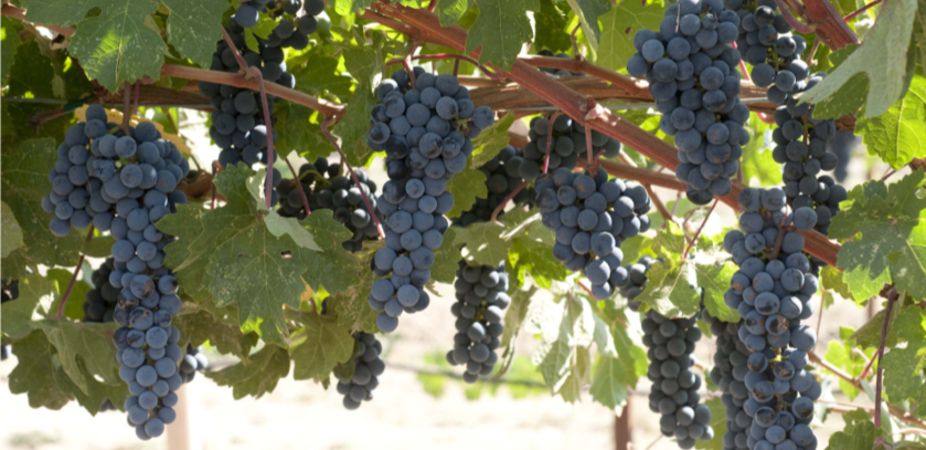
This article was originally published on The Conversation. The publication contributed this article to Live Science's Expert Voices: Op-Ed & Insights.
Growing winegrapes may be the most backward form of horticulture that exists. The vast majority of the world’s production uses only about 20 cultivars out of thousands of available grape varieties. The wine industry is convinced these traditionally-cultivated varieties alone provide all the diversity necessary and that newly-bred varieties can’t compete on wine quality. This belief persists in the face of modern genetic evidence that many of the world’s traditional varieties were intentionally bred from older ones. But things may start to shift as wineries in highly-recognized regions cope with a changing climate.
Breeding through the centuries
Improvement of the limited set of traditional varieties is done through clonal selection. People watch for natural mutations in vine offshoots called bud-sports. When these mutations are beneficial (better color, berry size, or ripening dates) the new forms – which are clones – are propagated by cuttings and distributed.
But these naturally-occurring mutations don’t provide the range of fruit and wine quality needed to maintain excellence in a changing climate. Varieties do exist outside the 20 usual suspects that would provide better fruit quality under warmer or colder conditions, but they would have to be tested and promoted. New varieties can be bred, but they will need to be selected for multiple traits, which could take decades. It will be faster and more precise to take advantage of advances in molecular genetics to optimize traditional breeding and select for improved quality, better climatic adaptation and better pest and disease resistance.
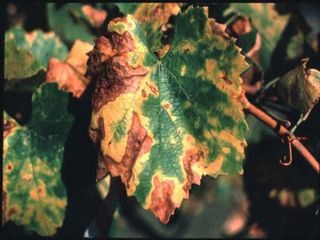
How to combat Pierce’s Disease
When Europeans first settled along the east coast of North America, they brought cultivars of the European grapevine, Vitis vinifera, with them. These vines were poorly adapted to the new environment and rapidly succumbed to pests and diseases. In the southern US and Mexico, Pierce’s Disease (PD) had the greatest impact and continues to dramatically restrict the cultivation of high-quality winegrapes. It’s caused by Xylella fastidiosa, a bacterium that constricts the water-conducting xylem tissue in the plant and causes dehydration and vine death. The problem of Pierce’s Disease provides a case study for how molecular genetics can solve problems that traditional breeding can’t.
There are some naturally PD-resistant grapes. Grape breeders have been trying to improve their quality for hundreds of years, but their efforts have been stymied by the fact that multiple genes control each of the desirable traits. The disase-resistance and fruit quality genes all sort independently in breeding, making it impossible to predict which traits will wind up in the offspring of these V. vinifera crosses with resistant varieties. More importantly, the odds of finding individuals with improved fruit quality while maintaining resistance are very low.
Looking to the DNA
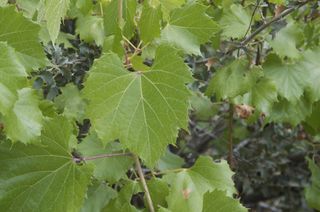
Recent advances in molecular genetics led to the development of genetic maps. These can chart the positions of desirable characteristics – including disease resistance and fruit quality – on a grape’s genes. Easily identifiable DNA markers that flank these traits can flag their presence or absence. This marker-assisted selection process can greatly accelerate classical breeding programs for woody perennial crops such as grapes – often cutting generation times from the usual five to eight years down to as short as two years.
Sign up for the Live Science daily newsletter now
Get the world’s most fascinating discoveries delivered straight to your inbox.
My lab has focused on PD resistance discovered in forms of V. arizonica grapes from northern Mexico. This resistance is controlled by a single dominant gene, which we genetically mapped and named PdR1. We start out by crossing V. arizonica and V. vinifera the old-fashioned way. In the past, we made these crosses and then had to test all the progeny for resistance, often after a year or two when they were large enough to harvest cuttings for greenhouse testing.
Now that we have markers for PdR1, we just grind up a tiny bit of leaf tissue from the new seedlings and and look for the DNA markers. Right away we know which plants are resistant. Just as importantly, we are able to throw away susceptible plants before wasting time and money planting them in the vineyard.
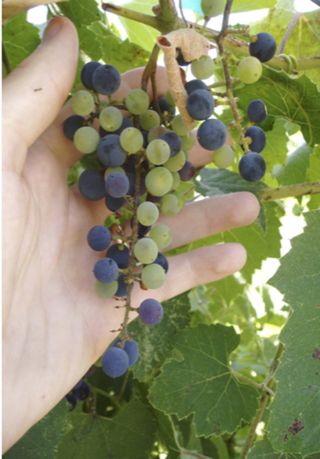
Because V. arizonica is homozygous dominant for PdR1 – meaning it has two functional copies of the resistance gene – all the first-generation progeny in these V. arizonica / V. vinifera crosses are resistant and contain about 50% V. vinifera. We test these plants to see which suppress the disease bacteria the most and which have the best fruit quality, then cross them back to a V. vinifera wine variety; progeny from that generation are about 75% V. vinifera. Remember, theoretically, the more V. vinifera, the better quality wine. We keep breeding the new generations back to V. vinifera; the next generation is 88% V. vinifera, next 94% and then 97%.
We were able to produce these generations in about 12 years. To save time, we made only a limited number of wines along the way. From previous work we know that the undesirable musty, foxy aromas and blue-purple pigmentation typical of wines with American species parentage begin to vanish at 88% V. vinifera, and are mostly gone in the 94% V. vinifera wines. Now we’re winnowing through thousands of 97% V. vinifera progeny, testing them in the greenhouse under extreme adverse conditions to identify those with the utmost resistance and the best wine quality.
In 2015, we will release an excellent as-yet-unnamed 94% V. vinifera selection – called 07355-075 in our lab – which is 50% Petite Sirah and 25% Cabernet Sauvignon. Within a year or two, we will release the first 97% V. vinifera PD-resistant winegrapes.
Next up: multiple resistances
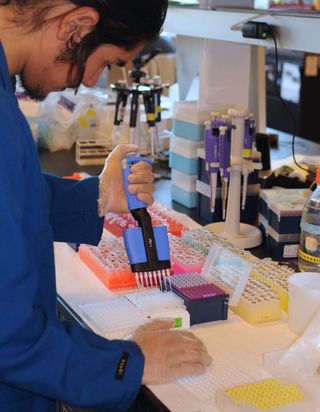
Plants whose resistance to pests and diseases rests on a single gene often breakdown over time as the pests evolve to overcome or avoid the very specific resistance mechanisms. Our next challenge will be breeding additional forms of PD resistance into our PdR1 varieties to avoid that problem. We’re currently genetically mapping other forms of resistance to develop the DNA markers we can use in breeding. These markers will be crucial because we’ll need to make breeding choices based on genetics; we won’t be able to tell by appearance which parent’s gene is responsible for progeny’s disease resistance. Only these markers will allow the selection and stacking of multiple and unique resistance genes.
We’re on the threshold of a revolution in grape breeding. New varieties will need to be accepted and encouraged as the environment changes. Disease-resistance breeding will allow us to reduce pesticide use and expand the cultivation of grapes into areas where disease currently impedes or prevents growing high-quality winegrapes. The climate challenge, along with public pressure to reduce today’s heavy use of pesticides, may launch a golden age of grape breeding. And this can all be done with classical breeding, assisted by genomics. It’s a high-tech way to much more quickly and efficiently transfer genes from one grape variety to another than has already been done for millennia.
This article is part of The Conversation’s series on wine. Click here to read more articles in the series.
This article was originally published on The Conversation. Read the original article. Follow all of the Expert Voices issues and debates — and become part of the discussion — on Facebook, Twitter and Google +. The views expressed are those of the author and do not necessarily reflect the views of the publisher. This version of the article was originally published on Live Science.
